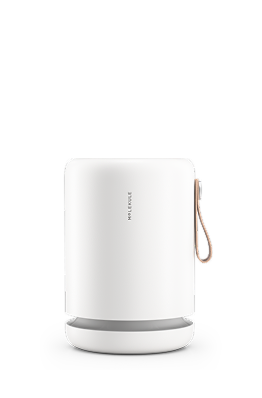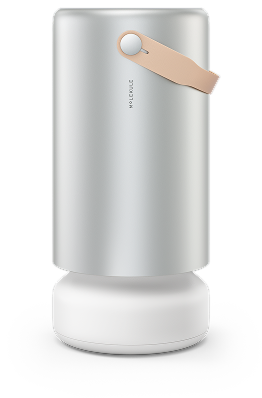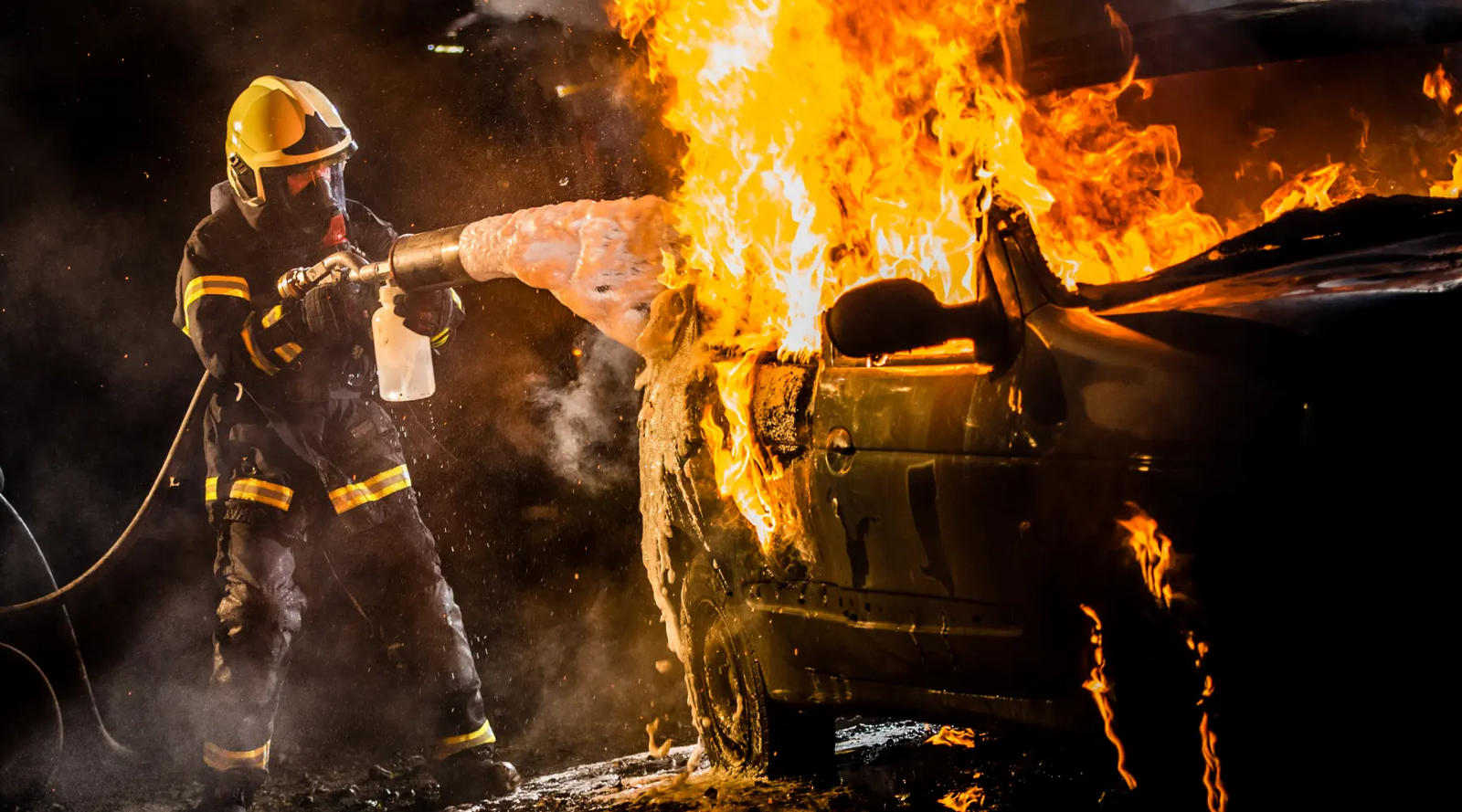Wildfires are a natural and necessary aspect of many ecosystems. Lightning strikes and extreme drought are natural catalysts for fires. They clear dead materials from the land, and make way for new soil, germination, and growth.
But as climate change has intensified, so have wildfires. Rising temperatures and drought conditions have lent to bigger, more dangerous fires. Year over year, natural and human-ignited fires have progressively caused more damage, both in terms of acres burned and property destroyed.
Of course, fires do more than burn—they pollute the air, causing a public health crisis. A recent study found that the annual exposure to wildfire smoke results in more than 30,000 deaths across the 43 countries analyzed in the study. Another study found that increases in fine particulate matter from wildfire smoke in 2020 led to a surge in Covid-19 cases and deaths in California, Oregon, and Washington.
Let’s break down what’s in wildfire smoke that makes it such a danger to your health and how you can protect yourself (and your pets and loved ones) as wildfires become an inevitable part of our landscape.

What’s in Wildfire Smoke?
Basically, wildfire smoke is a byproduct of everything that it’s burned. Consider a fire that burns trees, plants, buildings, and cars…now consider all of the plastics, chemicals, and materials that go into making those objects. Wildfires release those chemicals into the air, ready to be inhaled into your lungs in a variety of forms.
The main harmful components of wildfire smoke are:
- Particulate Matter (PM)
- Gases
- Other Toxic Substances
Particulate Matter (PM)
Particulate matter, or PM, refers to tiny particles suspended in the air. These particles vary in size, but the most concerning are:
PM10: Particles with a diameter of 10 micrometers or less. To put this into perspective: A single human hair is about 70 micrometers in diameter, making PM10 particles seven times smaller. They can be inhaled and cause respiratory issues like coughing and shortness of breath.
PM2.5: Even smaller, these particles are 2.5 micrometers or less in diameter. They can penetrate
deep into the lungs and even enter the bloodstream, leading to serious health problems like heart and lung disease, and even stroke.
Gases
Wildfire smoke also contains a variety of gases that can be harmful when inhaled:
- Carbon Monoxide (CO): This colorless, odorless gas can reduce the amount of oxygen that blood can carry. High levels can cause headaches, dizziness, and in severe cases, can be life-threatening.
- Carbon Dioxide (CO2): CO2 isn’t harmful in typical outdoor concentrations, but high levels from smoke can contribute to overall poor air quality.
- Volatile Organic Compounds (VOCs): VOCs are present everywhere, both from natural and human-made sources. They’re in car exhaust, fuels, and even household cleaning products. They can cause eye, nose, and throat irritation, headaches, and damage to the liver, kidney, and central nervous system.
Other Toxic Substances
Wildfire smoke can also contain a range of other toxic substances, especially when human-made materials burn:
- Polycyclic Aromatic Hydrocarbons (PAHs): Formed when materials like wood, plants, cigarettes, or fuels aren’t completely burned. PAHs are potentially carcinogenic, meaning they can cause cancer with prolonged exposure.
- Heavy Metals: Burning of buildings and vehicles can release metals like lead, mercury, and arsenic into the air, which can cause everything from nasal irritation to developmental issues and learning difficulties in children.
- Dioxins and Furans: These toxic compounds can form when plastics and other synthetic materials burn, causing severe health issues such as reproductive and developmental problems, immune system damage, and even cancer.
Why Is Wildfire Smoke a Health Concern?
Very simply put, you don’t want to be breathing in any of the nasty stuff listed above. They can all cause vast amounts of damage to the respiratory and cardiovascular systems, ranging from nasal irritation to chronic illness or worse.
- Respiratory Problems: The fine particles in wildfire smoke can irritate the respiratory system, causing coughing, shortness of breath, and aggravating conditions like asthma and bronchitis.
- Cardiovascular Issues: PM2.5 particles can enter the bloodstream, leading to inflammation and potentially causing heart attacks, strokes, and other cardiovascular diseases.
- Vulnerable Populations: Certain groups are more vulnerable to the health effects of wildfire
smoke, including children, the elderly, pregnant women, and individuals with preexisting health conditions such as heart or lung disease.
- Acute Symptoms: Exposure to wildfire smoke can cause immediate symptoms like eye, nose, and throat irritation, headaches, dizziness, and nausea.
- Long-term Health Effects: Prolonged exposure to wildfire smoke can lead to chronic respiratory and cardiovascular conditions and increase the risk of developing certain cancers.
How to Protect Yourself from Wildfire Smoke
Wildfires may be inevitable, but you can protect yourself (and your lungs) when they happen. What is comes down to is creating a haven of safe air inside when the air quality outdoor is unhealthy. Here are some quick ways to defend your home from the perils of toxic smoke.
- Monitor your local air quality. Knowledge is power. Visit airnow.gov to get air quality data where you live. It will help you plan your days so you can maximize time inside.
- Stay Indoors: This one is a no brainer. When air quality outdoors gets dangerous, it makes sense to stay in. Move your usual outdoor activities inside—home workouts, remote working when possible, cutting down on the time you take the pets outside are all ways to keep everyone safe from the clouds of hazardous fumes.
- Wear a mask when you have to go out. It’s not feasible for everyone to seal themselves indoors during an air crisis. You still have to commute, get the kids to school, run errands. We suggest wearing a mask to limit the amount of particulate matter you’ll actually breathe in. An N95 respirator will filter out 95% of particles sized at 0.3 microns.
- Prevent smoke from getting in. Close your windows and make sure there aren’t substantial cracks or crevices where smoke can seep in. It’s also worth noting that, when you close yourself inside your home, you’re keeping indoor pollution in. So try to limit the amount of cleaning chemicals you use, candles you light, and certainly keep smoking to an absolute minimum (this would be a great time to quit, if we’re being honest).
- Get an air purifier with PECO Technology. Okay, you probably saw this one coming, but it’s true. Molekule Air Purifiers use PECO Technology to destroy the toxic chemicals within wildfire smoke. If you opt for something other than Molekule, just make sure it at least has HEPA filtration to capture the harmful particles.
So, while wildfires are continuing to get worse year after year, there are ways to keep yourself safe from the smoke that proliferates surrounding areas. Like most things, an ounce of prevention and awareness can go a long way in keeping you, your family, and your pets healthy.







